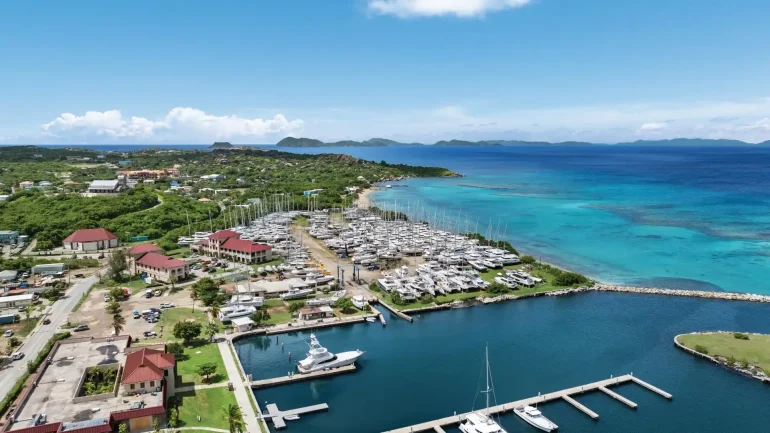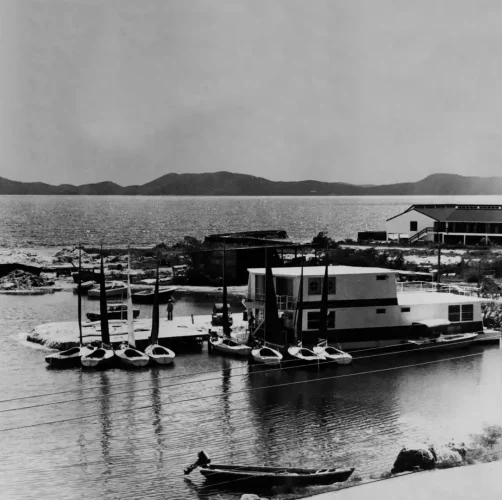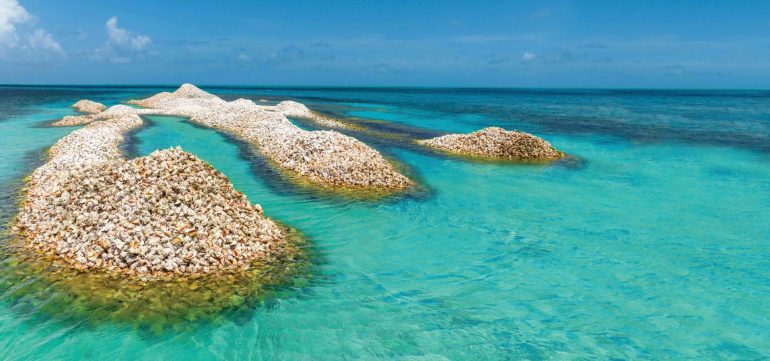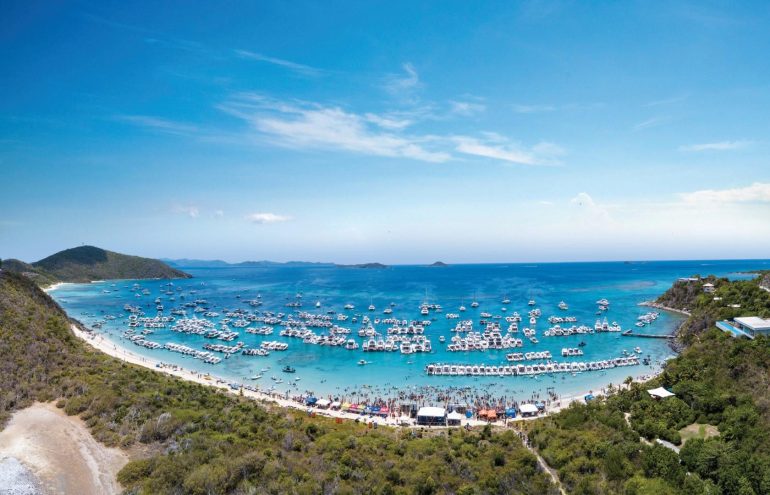Is there a more evocative geographical region than the Caribbean? The name conjures up the scent of hibiscus, sparkling blue waters, blinding white sand and the distant lilt of a steel drum tinkling and clanging through the wind-shaken trees. To the holidaying visitor, it summons up leisure and indulgence—too much rum, dancing in the moonlight, dozing in a hammock. From the viewpoint of many of its residents, it is an area of precarious livelihood, separated families, nostalgia for a distant home. This bifurcated view has long been the paradox of island life—a privileged class cared for by workers whose position is often tenuous and subject to the vagaries of unknown forces.
These paradoxes are the subject of a magnificent art exhibition being shown this summer and into early 2013 in New York City. “Caribbean: Crossroads of the World” is presented in three venues and remains open (in two of those venues) through January 2013, closing on October 21in the third. Spread among The Studio Museum in Harlem; the Queens Museum of Art; and El Museo del Barrio, the exhibition tells the story of the evolving consciousness of the residents of the various countries, changing power structures, the development of economies, the struggle for identity and the ever-present pulsing beauty of the region's cultures and landscape—and the points where they all meld together.
When Columbus first landed on the shores of the Bahamas, one of the first things he noticed was the gold dangling from the native Arawaks' ears. This sighting ignited a pursuit for that noble metal that laid waste to great civilizations and brought suffering and misery to untold millions, from Hispaniola to the lands of Central and South America.
Howard Zinn, in his People's History of the United States, quotes Columbus' journals thus: “the Natives are so naïve and so free with their possessions that no one who has not witnessed them would believe it.” Perfect candidates for enslavement. Thus was established the new reality of the Caribbean. Natives vanquished, Europeans ascendant in their newly seized fiefdoms, Africans dragged from their homeland and subjected to unimaginable cruelties to supply the labour—and increasingly the brain power—to operate and manage the vast estates that were established in Jamaica, Cuba, Dominican Republic, Haiti, Puerto Rico, Barbados and the hundreds of smaller islands scattered up and down the Antilles chain, as well as on the eastern coasts of Central and South America.
The establishment of the European social structure in the Caribbean, with its parodic reflection of the ordered life “back home” required furnishings and decorations to embellish the newly built great houses and plantation headquarters and to define and reflect the status of the occupants. Painters travelled from Europe to catalogue the wonders of nature and to bring back treasures from the islands as well as from the great civilizations of the Americas.
The idea of the region coalesced gradually and the concept of a Caribbean culture and the contemporary understanding of the region can be given a start-up date: 1791, the year the Haitian Revolution began—which was the first successful attempt to establish an independent state as the result of a rebellion of enslaved peoples. From that, all the subsequent changes in the political alliances flowed. This post-Haiti history is the subject of Caribbean: Crossroads of the World. The exhibition, the first to attempt to bring together disparate artworks from the many countries and cultures represented, is a triumph. The range and depth of the artists and works presented is a view of a new world, setting off flashes of illumination, rather like a fireworks show, so that suddenly certain aspects of life and art are lit up to be replaced by another and another. The colour and originality of subject and form make it truly exhilarating.
The idea of the Caribbean as a crossroads of cultures is spotlighted by the riot of styles incorporated into artworks that range from primitivist, or faux-primitivist, carvings and dolls to contemporary media such as photography and video. In one video piece a dancer is seen reflected in mirrors as she twirls to music of the early 19th century, a reflection upon the bold action of Peter von Scholten when, as governor of the Danish West Indies, he opened Government House in St Croix to newly emancipated slaves so that they might take their place as free citizens and participate in a seasonal ball. For his troubles he was recalled to Denmark and put to trial.
The regional cultural ferment is perhaps best exemplified through the variety of its music. Where in the world is there another geographic region that has given birth to so many im
portant and vibrant musical styles? The Rumba and Salsa from Cuba, the Merengue from the Dominican Republic, Reggae from Jamaica, Calypso from Trinidad and many other forms have spread throughout the world and have become incorporated into vernacular styles everywhere. In a similar fashion, and brewed from the same ingredients—West African motifs and styles, European perspective and techniques—new styles of visual art and representation engage the historical and political past and future.
Echoes of folk art, traditional weaving patterns and wood carving techniques bounce off contemporary video and photography—in another video, a motorcycle drives around the island of Vieques, until recently property of the US Navy, off-limits to Puerto Ricans. Its exhaust pipe terminates in a trumpet and the blaring engine sounds allude to the brass-heavy music that defines the Spanish-speaking islands. On a more political note, photographs from Venezuela describe the impact of oil platforms as they increasingly dominate the landscape in Lake Maracaibo. The gold that first brought Columbus and his successors to the region has been replaced, but the pursuit remains the same.
A note on a gallery wall at El Museo del Barrio defines the Caribbean historically “as both a utopian place of pleasure and a site of illicit or deviant activity.” The view, popular during colonization and in the Cold War era, of the Caribbean as a place of adventure and danger, replete with Commies, zombies and pirates, lingers still. As tourists flood the region, the rich and notorious gather to frolic in private playpens on certain preferred islands—St Barths, Mustique, Turks and Caicos—pirate history is retold in Hollywood blockbusters and reenacted in the financial centres, as drugs and guns and humans are trafficked from one end of the region to the other, that definition requires no qualification.





